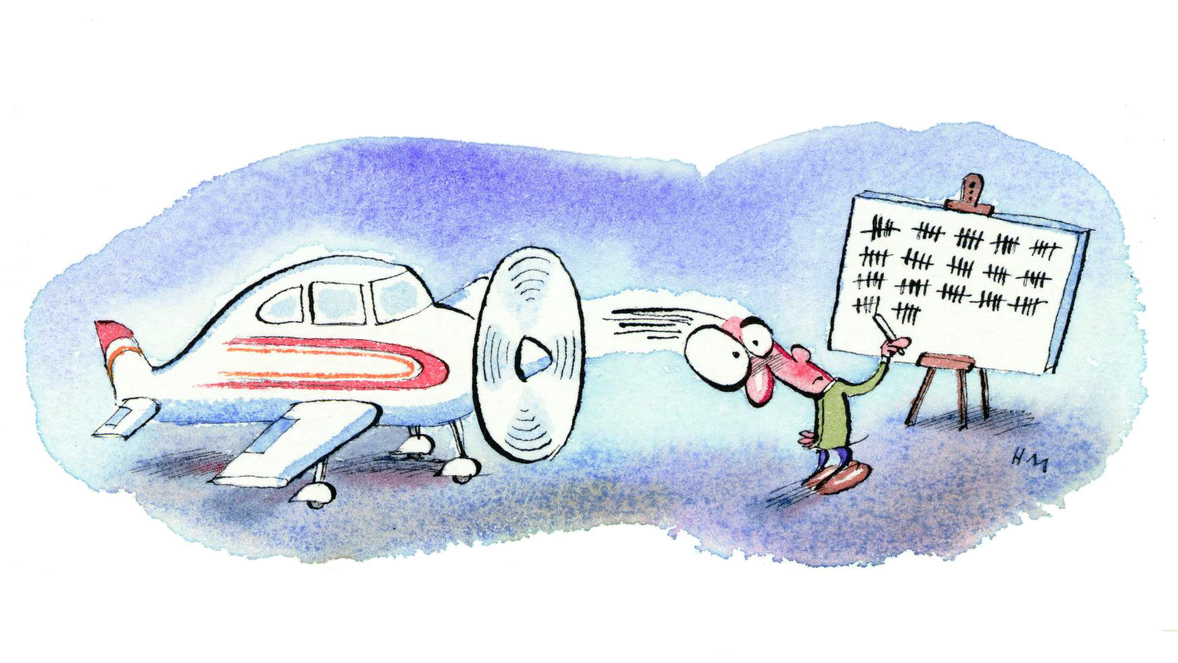Checkride-ready
See how you measure up to FAA standards with questions from the AOPA Pilot Information Center.
1. Except when necessary for takeoff or landing, what is the minimum safe altitude required for a pilot to operate an aircraft, over other than a congested area?
A. An altitude of 500 feet above the highest obstacle within a horizontal radius of 1,000 feet
B. An altitude of 500 feet agl, except over open water or a sparsely populated area, which requires 500 feet from any person, vessel, vehicle, or structure.
C. An altitude allowing, if a power unit fails, an emergency landing without undue hazard to persons or property on the surface.
2. Maintenance records show the last transponder inspection was performed on September 1, 2016. The next inspection will be due no later than
A. September 30, 2018.
B. September 1, 2018.
C. September 30, 2017.
3. Which cruising altitude is appropriate for a VFR flight on a magnetic course of 135 degrees?
A. Even thousands plus 500 feet.
B. Odd thousands plus 500 feet.
C. Even thousands.
4. A person may not act as a crewmember of a civil aircraft if alcoholic beverages have been consumed by that person within the preceding
A. 24 hours.
B. 12 hours.
C. eight hours.
Ace
Can you correctly answer all five of these questions from Barry Schiff?
5. When a conventional six-cylinder aircraft engine turns at 2,400 rpm, how many combustion cycles occur every minute?
A. 2,400
B. 3,600
C. 7,200
D. 14,400
6. True or false? Most lightplanes have a maximum-allowable limit load factor of plus 3.8 Gs. A pilot practicing steep turns, therefore, is in danger of exceeding this limit.
7. Why is it often difficult to hot-start a fuel-injected engine?
8. Eight- and 12-foot-long wind socks are designed to fully extend with a wind speed of
A. 15 knots.
B. 20 knots.
C. 25 knots.
D. 30 knots.
9. What is the difference between speed and velocity?
Final Exam Answers
1. The correct answer is B. 500 feet above the surface is the minimum altitude required by regulation. Over sparsely populated areas, however, a pilot must remain 500 feet from any person, vessel, vehicle, or structure. This can be vertical distance, horizontal distance, or both. (FAR 91.119)
2. The correct answer is A. To use a transponder, it must have been tested and inspected, according to the guidance in FAR Part 43, within the preceding 24 calendar months. Transponder checks expire the last day of the month in which they were checked, two years hence. (FAR 91.413)
3. The correct answer is B. Except while in a holding pattern of two minutes or less, or while turning, while operating an aircraft under VFR in level cruising flight more than 3,000 feet above the surface, a pilot shall maintain the appropriate east/west cruising altitude, unless otherwise authorized by ATC. (FAR 91.159)
4. The correct answer is C. The eight-hour “bottle to throttle” regulation prohibits flight within eight hours after the consumption of any amount of alcohol, regardless of how little. If a lot has been consumed, the prohibition on flying while under the influence of alcohol also applies. (FAR 91.17)
5. The correct answer is C. Each piston/cylinder of a four-cycle engine undergoes a complete cycle every two revolutions of the crankshaft. Each piston, therefore, undergoes 1,200 cycles during 2,400 rpm. Six pistons, therefore, undergo 7,200 cycles per 2,400 rpm.
6. False. Steep turns are limited to 60 degrees of bank, which yields a load factor of only 2 Gs. A 75-degree bank angle is required to generate a load factor of 3.8 Gs.
7. The most significant reason is that metal fuel lines adjacent to the heat-soaked engine become hot, and fuel in them boils (percolates), which sometimes is heard after shutdown as hissing. The resulting bubbles of fuel vapor cause vapor lock.
8. The correct answer is A. 15 knots. Also, a wind sock must be capable of withstanding a wind speed of at least 75 knots.
9. Speed describes only the rate of movement. Velocity is a vector and describes both speed and direction of movement.


